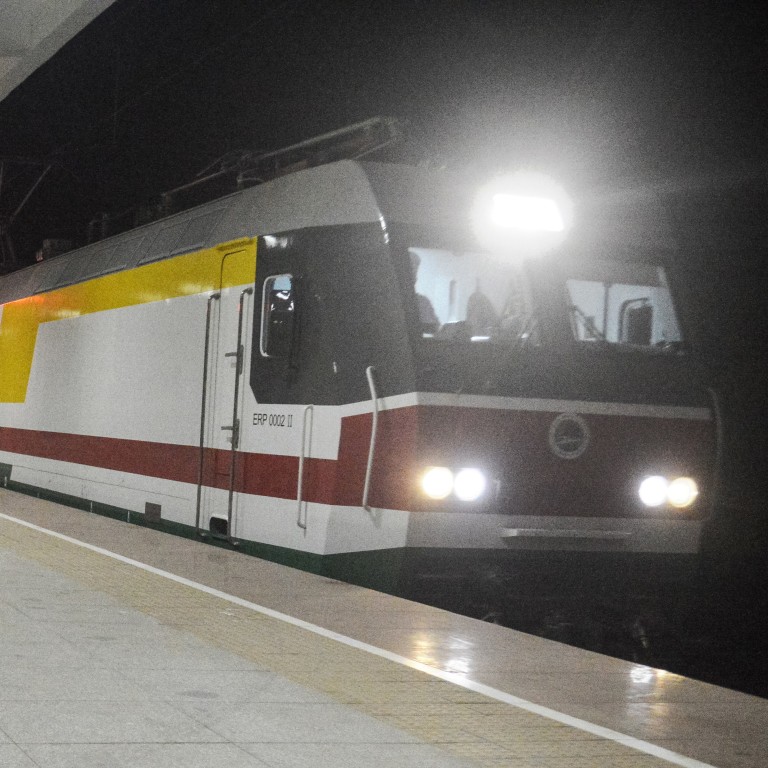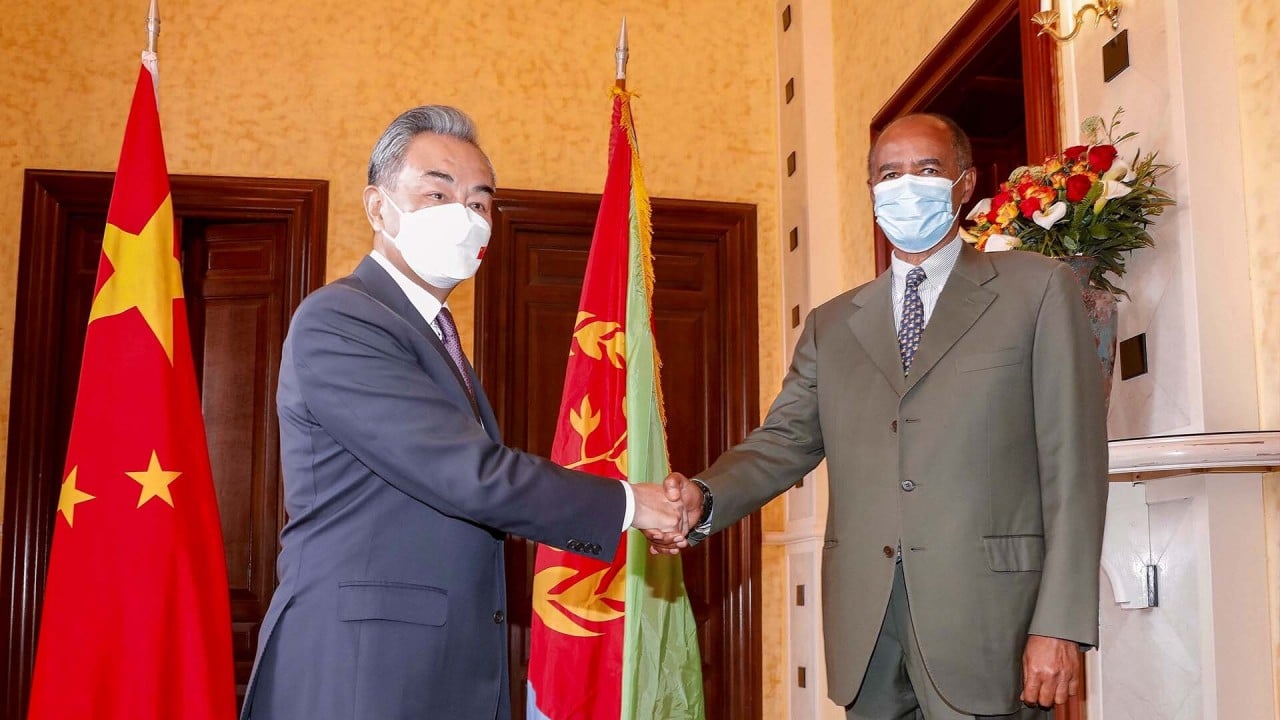
Why is China being blamed for the stalled G20 debt relief plan for distressed countries?
- The Common Framework was meant to help out low-income nations battered by the coronavirus pandemic
- A year on and it has failed to benefit any potential recipients
More than a year has passed since the G20 launched a debt restructure plan to help potential defaulters but developing countries have yet to see the benefits – something the US and multilateral groups are blaming on China.
Under the scheme, participating countries were to agree to restructure debt with bilateral lenders and the International Monetary Fund (IMF). The nations were then supposed to seek similar debt treatment from private-sector creditors.
There were hopes of progress in the Indonesian capital Jakarta earlier this month, when G20 finance ministers and central bank governors met to consider IMF and World Bank proposals for immediate debt service suspension for countries seeking debt restructuring.
But the meeting failed to endorse the proposals and the talks ended without a solution to the debt crisis. One major sticking point was that China reportedly did not want outright haircuts on debt.
China’s top diplomat holds debt talks with Zambia after restructure plea
Eric LeCompte, Jubilee USA’s executive director and a United Nations finance expert, who has monitored G20 and G7 meetings since 2010, said the debt discussion was one of the most difficult conversations at the G20 meeting.
“Developing countries struggled with a lack of resources before the pandemic hit. Now they struggle with low revenues and rising debts. Without debt relief, we will see a wave of defaults and countries will run out of money to pay their creditors,” LeCompte said.
He said the promise of the G20’s Common Framework was that it could bring together all creditors, including China and the private sector, under one umbrella. Unfortunately, the private sector was refusing to cooperate, and China was slowing the process down, LeCompte said.
“It appears China wants to cut its own debt deals before the Common Framework process is more fully implemented. This means that the G20 is still lacking consensus to move forward their debt reduction process in a robust and quick way,” he said.
“It will probably take more defaults and increased crises, when developing countries run out of money to pay debts, for world leaders to move more rapidly.”
According to the World Bank, the Covid-19 crisis has led to a dramatic increase in sovereign debt.
“Average total debt burdens among low- and middle-income countries increased by roughly 9 per cent of GDP during 2020, compared with an average of 1.9 per cent of GDP per year over the previous decade,” it said in its “2022 World Development Report”.
Zambia is in the process of restructuring about US$15 billion of external debts as a precondition to secure US$1.4 billion in IMF loans. Lusaka owes Chinese lenders about US$6 billion, which went into building mega projects including airports, highways and hydropower dams.
Now, many issues stand in the way for the countries seeking debt relief. First, private lenders have not been forthcoming. For instance, while some countries, including China and members of the informal creditors group known as the Paris Club, had agreed to restructure Chad’s foreign debt, the matter has been complicated by loans it received from commodity traders such as Glencore.
Also, divisions have emerged among some countries and creditors, with the US, IMF and the World Bank blaming China for not taking part fully and China blaming multilateral lenders.
At the launch of the 2022 World Development report earlier this month, World Bank Group president David Malpass said the process had hit a wall.
“Currently, there are no predictable or orderly systems for sovereign debt restructuring, and the implementation of the G20 Common Framework is stalled,” he said.
In what was seen as a veiled attack on China, Malpass said “we need urgent progress on debt transparency, particularly related to contract secrecy, collateralisation, and escrow accounts”.
Two days later, US Treasury Secretary Janet Yellen pointed directly at China, saying it needed to be more active in the G20 debt relief efforts, Agence France-Presse reported. She said the G20 initiative “has not been going very rapidly,” and the United States “would hope to see more active participation” from China.
China responded saying multilateral development banks and private creditors, mainly commercial institutions of developed countries, accounted for a large part of the debt structure of these heavily indebted low-income countries.
“Multilateral financial institutions and commercial creditors account for more than three-quarters of the total external debt owed by African countries,” Chinese foreign ministry spokesman Wang Wenbin said.
“Their claims are an important cause of these countries’ debt problems, and they bear a greater responsibility in helping developing countries reduce their debt burden.”
The Chinese government is, by far, the largest government creditor, eclipsing all the G7 governments and other emerging government creditors
Overall, the challenges of addressing debt distress in developing economies have grown more complex, reflecting a broader array of creditors and forms of finance, according to Scott Morris, a senior fellow at the Centre for Global Development think tank in Washington.
“So, the struggles we are seeing right now in the G20 were probably inevitable,” Morris said.
“China factors heavily into the discussions because the Chinese government is, by far, the largest government creditor, eclipsing all the G7 governments and other emerging government creditors.”
China also straddled the line between government and commercial creditor, which complicated efforts to rationalise the roles of various creditor groups, he said.
“Ultimately the G20 is looking for a new architecture, one that affords China a leadership role and comes to terms with a much larger role for commercial creditors, but also asserts long-standing principles around debt relief – in particular, ensuring that debt relief measures are in line with the requirements of an IMF programme in seeking to ensure some reasonable prospect for debt sustainability,” Morris said.
Virag Forizs, an Africa economist at London-based consultancy Capital Economics, said China had tended to “play hardball” in debt relief negotiations, preferring a bilateral approach.
“This, in turn, has reinforced private bondholders’ concerns about potential unequal treatment across creditors,” Forizs said.
She said that on the debtor side, governments had remained wary about the negative consequences of signing up to debt relief initiatives. For example, Ethiopia’s sovereign credit rating was downgraded following the authorities’ debt restructuring request under the Common Framework, Forizs said.
It is too early to write off the Common Framework
Mark Bohlund, a senior credit research analyst at REDD Intelligence, said the most notable Common Framework failure of the G20 meeting in Jakarta was the inability to agree to the comprehensive debt-servicing standstill argued for by the IMF and World Bank.
He said the debt standstill would have brought substantial benefits for applicants, most notably Ethiopia where debt-servicing was draining forex exchange reserves to a critical level and adding to an already strained humanitarian situation.
“It is too early to write off the Common Framework, but it is clear that a lack of progress threatens to create a situation where debt-distressed countries risk doing substantial damage to their economies, with knock-on impacts on health and other outcomes, in the absence of an efficient process to restructure their debt,” Bohlund said.



